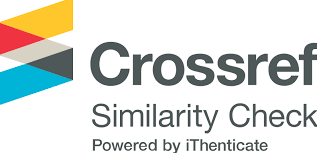Research conditioning copper mining waste soil by plant Pongamia pinnata combined inoculums Arbuscular mycorrhiza in nurser
Keywords:
Arbuscular mycorrhiza, AM, bioremendaiton, copper mining waste, Pongamia pinnataAbstract
The bioremediation that combined between microbialremediation and
phytoremediation would be potentially and effectively applied for cleaning up
contaminated sites, especially the abandoned mining areas with their
contaminated tailings to restore the ecosystems. The copper mining waste soil
of Sin Quyen and Ta Phoi (Lao Cai) were collected and used for the study on
effects of Arbuscular mycorrhiza (AM) combined plant Pongamia pinnata
rehabilitate ability to the contaminated soils at nursery of Research Institute for
Forest Ecology and Environment. After 8 months of experiment on planting
Pongamia pinnata in combination with inoculated AM in vitro in the nursery
endosymbiotic, it was found that inoculation AM with 5 grams of AM in vitro
100IP/gram (- 500 Infective progagule units) per plant showed that AM in vitro
increased growth in diameter (D00
) -24% and height (Hvn
) increased from 45 -58% compared with not using AM in vitro after 8 months of experiment. The
physicochemical and physical properties of the substrates with AM inoculated
were found to be remarkably improved after 8 months of the experiment as
compared to those in control and those before experiment (zero baseline). The
Rhizobium symbiotic nitrogen fixation of the treatment inoculated with AM in
vitro significantly increased in number; Microbes decompose phosphate of the
experimental treatment inoculated with AM preparations in vitro were
significantly higher than those of the experimental treatment that were not
inoculated with AM in vitro.
References
1. Ali, H., Khan, E., Sajad, M.A., 2013. Phytoremediation of heavy metals-concepts and applications. 91, 869 - 881.
2. Alkorta. I & Garbisu. C, 2001. Phytoremediation of organiccontaminants. Bioresource Technol. 79: 273 - 276
3. Alkorta I., Hernandez-Allica J., Becerril J. M., Amezaga I., Albizu I., and Garbisu C., 2004. “Recent findings on the phytoreme- dation of soils contaminated with environmentally toxic heavy metals and
metalloids such as zinc, cadmium, lead, and arsenic,” Reviews in Environmental Science and BioTechnology, vol. 3, pp. 71 - 90, 2004.
4. Alloway, B.J., 1990. Heavy metals in soils. Blackie & Son Ltd.
5. Anh, B.T.K., Kim, D.D., Tua, T.V., Kien, N.T., Anh, D.T., 2011. Phytoremediation potential of indigenous plants from Thai Nguyen province, Vietnam J Environ Biol. 2011 Mar; 32(2):257 - 62.
6. Conesa Héctor M., Evangelou Michael W. H., Robinson Brett H., and Schulin Rainer, 2012. A Critical View of Current State of Phytotechnologies to Remediate Soils: Still a Promising Tool, The Scientific World Journal, Volume 2012, Article ID 173829, 10 pages.
7. Dickinson N. M., Baker A. J. M., Doronila A., Laidlaw S., and. Reeves R. D, 2009. “Phytoremediation of inorganics: realism andsynergies,” International Journal of Phytoremediation, vol.11, no. 2, pp. 9 7 - 114, 2009
8. Ha, N.T.H., Sakakibara, M., Sano, S., Nhuan, M.T., 2011. Uptake of metals and metalloids by plants growing in a lead-zinc mine area, Northern Vietnam. Journal of Hazardous Materials 186, 1384 - 1391.
9. Li, X., Thornton, I., 1993. Multi-element contamination in soil and plant in the old mining area. UK Applied Geochemistry S 2, 1993151 - 1993561.
10. Mahar, A.; Wang, P.; Ali, A.; Awasthi, M.K.; Lahori, A.H.; Wang, Q.; Li, R.; Zhang, Z. Challenges and Opportunities in thePhytoremediation of Heavy Metals Contaminated Soils: A Review. Ecotoxicol. Environ. Saf. 2016,126, 111 - 121.
11. Marques Ana P. G. C., Oliveira Rui S., Rangel António O. S. S., Castro Paula M. L., 2008. Application of manure and compost to contaminated soils and its effect on zinc accumulation by Solanum nigrum inoculated with arbuscular mycorrhizal fungi, Environmental pollution, 151(3):60 8 - 20
12. Marques Ana P. G. C., Rangel António O. S. S., Castro Paula M. L., 2009. Remediation of Heavy Metal Contaminated Soils: Phytoremediation as a Potentially Promising Clean-Up Technology, Critical Reviews in Environmental Science and Technology 39(8)
13. Reeves, R.D, 2003. Tropical hyperaccumulators of metals and their potential for phytoextraction. Plant Soil 249, 57 - 65








